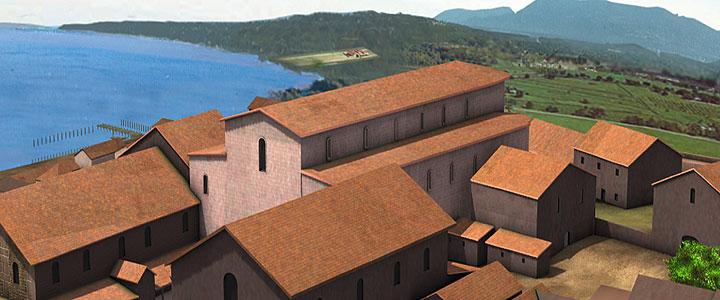The origins of St Peter's Cathedral
Already proven to date back to around 4500-4000 BC, in the area of Saint-Gervais, the presence of inhabitants in Geneva can be traced back throughout the Neolithic, in the harbour or along the banks of the lake. These villages grew dramatically during the Bronze Age. There is evidence of a cluster of dwellings on the left bank at the end of the 2nd century BC. After the conquest of Transalpine Gaul by the Romans and the defeat of the Allobroges, Geneva became an important military and commercial crossroads inside the Roman Empire. No major establishment seems to have existed on St Peter’s hill before the death of Caesar, aside from a sanctuary built in the 1st century BC on the tomb of an important Allobrogian person, on the site of which a Roman sanctuary was subsequently built. Storehouses, a public edifice and dwellings were erected near the port.
In the 4th century CE, Geneva became the seat of a bishopric. A first Christian edifice was built on the hill (between 350 and 375), on the ruins of the Roman sanctuary. This “northern cathedral” and a first baptistry were soon complemented by a southern cathedral, a second baptistry and an atrium.
After a fire struck the north cathedral in the year 500, King Sigismund of Burgundy rebuilt it and asked Pope Symmachus to bring him the relics of St Peter.
In the late 5th century and the 6th century, the episcopal complex expanded as new buildings were built. In the 6th and 7th centuries, a third (western) cathedral was built, to complete the set.
In the 9th and 10th centuries, the western cathedral grew up over the baptistries. In around the year 1000, this western cathedral replaced the three episcopal churches (www.site-archeologique.ch)
